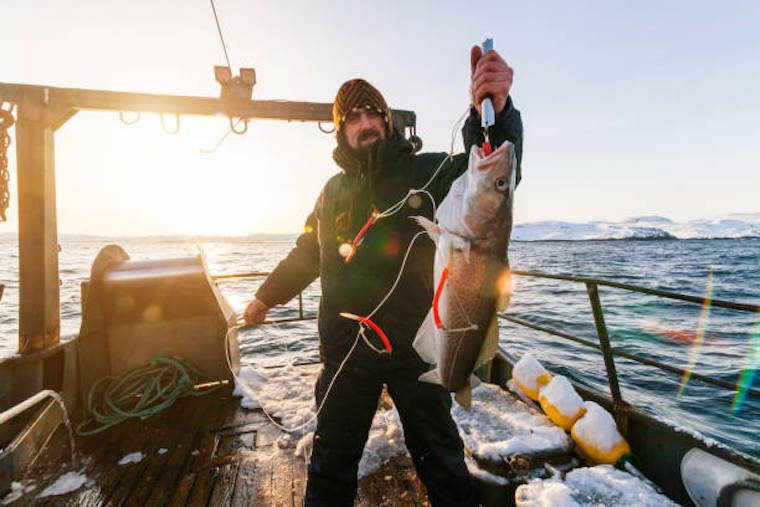How to Cast a Fishing Rod
Before you can learn how to cast a fishing rod it is important for you to understand the separate parts of a fishing rod and reel. A fishing rod and reel are actually two separate units that are interchangeable. The fishing rod is the long bendable shaft that has loops called “eyes” in it where the fishing line runs out and into the reel. The fishing reel is the mechanism that actually reels in the line. It is a mechanical piece that is made of the following parts.
The Bail Arm is a hinged metal rod that is used to either release of retract the fishing line. Once opened it allows the fishing line to come off of the fishing spool. Once closed its function in conjunction with the roller will guide the fishing line back onto the reel spool.
The Spool mentioned above is a round metal shaft that is used to collect the fishing line that has been reeled into the fishing reel. It also allows the fishing line to flow freely off when a fishing cast has been made.
The Drag Adjustment is used to adjust how much force is required to have the fishing line come off of the reel when the bail arm is in the closed position. This is an important adjustment as it will control how much tension is placed between you and the fish that you will have on the line. If this tension is too much is may cause your fishing line to break. If this tension is too less it may not keep the fishing hook securely in place when reeling in a fighting fish that is on the line.
The Fishing Reel Handle is what is used to crank in the line. When rotated in a counter clockwise motion it rotated the closed fishing bail and in turn pulls in the fishing line. On some fishing reels their is a reverse setting on the back of the reel which allows you to also rotate the handle in a clockwise fashion which allows the fishing line to come off of the fishing line. It is generally a good idea to have this setting set to the proper counter clockwise direction as what generally happens with a novice fisherman is that they end up rotating the fishing handle in the wrong direction which causes what is referred too as a “Bees Nest” or a large tangle of fishing line at base of the fishing rod.

Now that we have discussed briefly what the different parts of the fishing reel and rod are we can discuss how to cast a fishing lure or in this instance a fishing weight. You may want to set up a small area in your backyard to practice before you actually head to the lake or pond. When I was younger I set up a hula-hoop in my backyard to practice my casting techniques. You may want to try this yourself.
Before you can perform your first cast you first need to attach a small weight to the end of your fishing line. You can use a standard Clinch Knot to attach a weight to the end of your line. Once the weight is in place follow the steps listed below.
- Take your pointer finger of your right hand and pinch the fishing line between your finger and fishing rod. This is what will hold the fishing line in place when you open the bail.
- Open the bail of the fishing reel with your left hand. When you do this the weight should not hit the floor rather it should be held in place with the tension you are putting on the line with your right pointer finger and fishing rod.
- At this point you are almost ready to cast. With your left hand grab the base of the fishing rod.
- Raise the fishing rod by lifting and rotating it over your right shoulder such that the reel is facing up in the air. You should look something similar to the woman on the right.
- Now with a thrust with your two arms rotate the tip of the fishing rod forward by rotating both your wrists and forearms. When the fishing rod is directly strait up and down let go of the fishing line with your pointer finger releasing the tension within the fishing line.
If done properly you should see the fishing weight fly through the air and land a few yards ahead of you. This takes some practice so be patient and practice a number of times. Try to get the fishing weight in the center of the hula-hoop that you placed on the ground. Once you have mastered getting the fishing weight in the center of the hula-hoop try a few different size weights to get the feel of casting with different weights attached.
There are a few different types of fishing reels. The one described above is probably the most popular fishing reel. It is referred to is a Spinning Reel. Almost as popular is the SpinCasting Reel which is similar and almost as popular, but it has an enclosed casing and a casting button in the rear. You generally see a SpinCasting Reel on younger fishing rods as they can be easier to cast. A BaitCasting real has a limited casting capability, but it often used for heavier game fishing. It is commonly used when trolling or other deep sea fishing. There is also the Fly Fishing Reel which is similar in mechanics to the BaitCasting reel, but allows the fly fishing line to freely come of the reel when needed.







